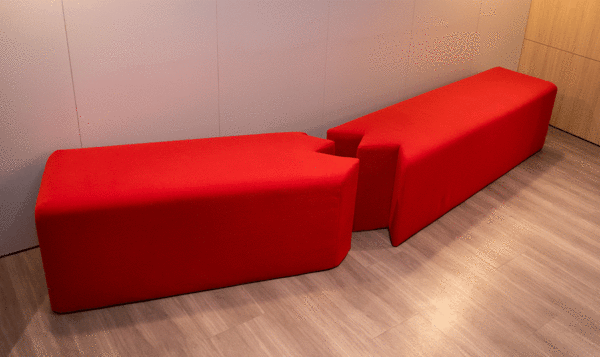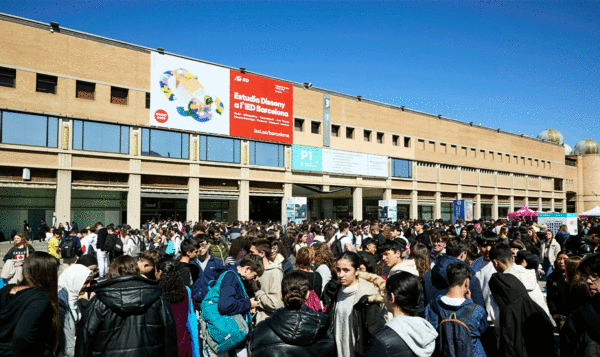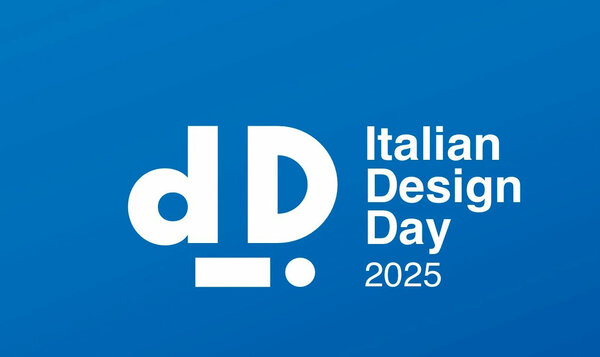Human-centred interior design represents a significant evolution in the way living and working spaces are conceived and constructed.

Human-centred interior design: what it means, the challenges and the opportunities
Date
09 September 2024
This approach puts people's needs and well-being at the centre of the design process, creating environments that are aesthetically pleasing, but above all functional and in harmony with the needs of those who live in them on a daily basis.
What is human-centred interior design?
Human centred interior design puts the person at the heart of the design process. As a result, the main objective is immediately apparent: the careful consideration of people's physical, psychological and emotional needs in order to create more functional and comfortable spaces.
In this context, Designers need to consider a wide range of factors that influence people's experience in and with spaces. Among these, ergonomics and safety play a key role. The former ensures that the furnishings and room layouts are suited to the physical characteristics of the users. The latter helps prevent accidents and encourages the creation of spaces that convey a sense of protection and tranquillity.
The psychophysical well-being of occupants is at the heart of every design decision from start to finish. This means that design must take into account all aspects that can positively influence mood and mental health, such as natural lighting, air quality, acoustics and the presence of natural elements. environmental sustainability is another factor that fits perfectly into this approach, encouraging the use of environmentally friendly materials and energy efficient solutions.
The challenges of human-centred interior design
Adopting a human-centred approach to interior design is an evolution in the way living and working spaces are designed and constructed, but it also presents a number of challenges. First and foremost, fully understanding the needs and expectations of end-users, which can vary greatly depending on factors such as age, abilities, lifestyle and personal preferences. This requires careful analysis and research in the pre- and post-operational phase that often involves interviews, field observations, and behavioural studies.
Moreover, human needs and demands often go beyond the canons dictated by the technical and regulatory requirements of the processes. Therefore, designers have to navigate building regulations and safety standards while trying to create spaces that genuinely meet the needs of the user. This balance requires listening skills, creativity and flexibility during each design phase.
The opportunities of human-centred interior design
The human-centred approach to interior design, despite its challenges, has the power to radically transform people's quality of life and well-being. Creating services that specifically address the physical and psychological needs of users, in both physical and digital contexts, represents a unique opportunity to promote physical and mental health, reduce stress and increase comfort and productivity.
People-centred design not only promotes individual well-being, but also actively promotes inclusion and accessibility. Considering different abilities and special needs in the design phase creates fairer and more welcoming environments for everyone. Not only does this approach improve the lives of people with disabilities, it also makes spaces more versatile and adaptable to the different stages of each user's life.
In contrast, from a market perspective, the adoption of this approach offers a significant competitive advantage. Companies and professionals who specialise in human-centred design can set themselves apart by offering customised solutions that are attentive to the specific needs of users. This attention to detail and customisation results in greater customer satisfaction, creating an added value that differentiates these professionals from the competition.
Case studies and best practices
In line with this human-centred design philosophy, IED is committed to integrating a human-centred approach into its daily activities. One specific example is the “OLTRE” project developed by the students on the Interior Design three-year degree course. This project transformed the Hotel San Paolo into a “smArt” hotel, conceived as a creative hub and meeting point for artists and thinkers. "OLTRE" embodies the principles of human-centred design, offering a multi-sensory hospitality experience that stimulates new experiences and fosters social interaction.
Among the key principles that led to the success of projects like these are:
- Involving end-users in the design process through consultation and testing.
- Creation flexible spaces that can adapt to different needs and activities.
- Paying attention to the details that have an impact on comfort and well-being, such as lighting and acoustics.
- Integrating technology in an intuitive and non-invasive way.
Training and skills for human-centred interior design
The human-centred approach to interior design requires multidisciplinary training that goes beyond traditional design skills. Professionals in this field must integrate knowledge of ergonomics, environmental psychology and social sciences in order to comprehensively analyse and understand how people interact with the spaces around them.
Transversal skills are equally required. Empathy is a key aspect of truly understanding people's needs, while problem-solving skills enable creative solutions that find a balance between aesthetics and functionality. Moreover, the ability to work in multidisciplinary teams is also important, as this approach often requires collaboration with experts from different disciplines.
The essence of the professional in this field ultimately lies in his or her ability to interpret user needs, analyse complex data and translate them into innovative solutions. This ability to combine functionality and aesthetics gives human-centred design its unique, stimulating and rewarding character.
For those wishing to specialise in this field, IED offers state-of-the-art educational opportunities, with Master Courses and Master of Arts courses providing comprehensive, practical training in interior design.
Find out about all the courses here!








